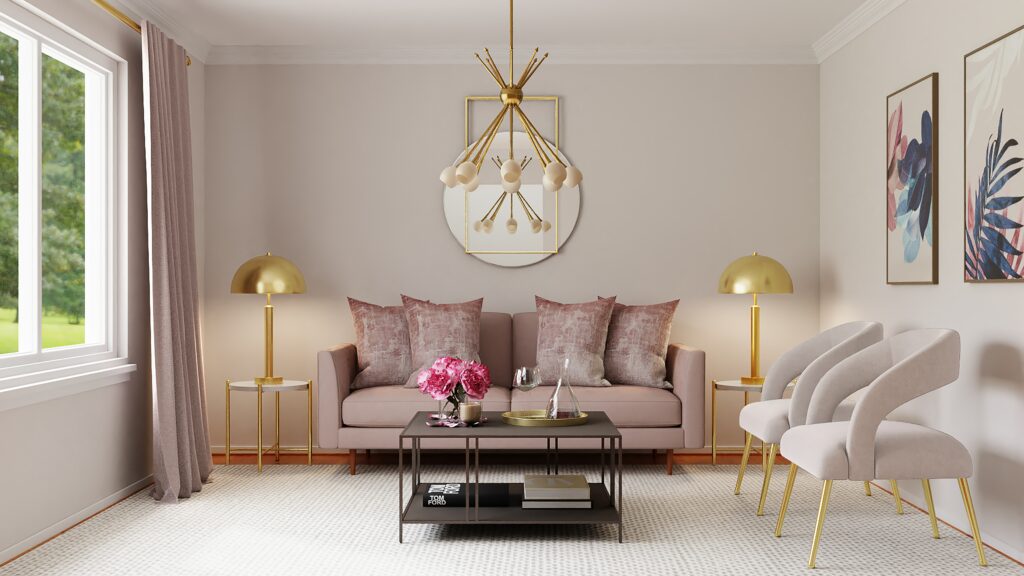Let’s face it: choosing furniture is one of the most important decisions when undertaking a renovation project. Whether you are considering upgrading your living space or deciding on elements for a business venture, getting the right pieces can be daunting. After all, they must look good in design and aesthetic terms and be practical and durable enough to last – and that’s no easy feat. Here, we will provide some tips on what you should know when choosing furniture during a renovation project so that you can curate the best possible selection for your space.
1. Incorporate Innovative Solutions
Innovation in furniture design can significantly enhance your renovated space’s functionality and aesthetic appeal. Look for pioneering solutions such as multi-purpose furniture or space-saving strategies that redefine and optimize your space. Investing in new study pods, which blend aesthetics with convenience, can be an excellent addition if you’re renovating a study or workspace. These compact units offer a quiet, private space conducive to focused work, all while adding a modern touch to your room’s aesthetic.
Integrating innovative solutions goes beyond purely physical elements. Technology has made significant inroads into furniture design, with ‘smart’ pieces that can adapt to your needs. For instance, height-adjustable desks or couches with built-in USB ports provide convenience and functionality in today’s digital age. Consider such advancements when choosing furniture for your renovated space to ensure it aligns with modern needs and lifestyle.
2. Consider Your Design Aesthetic
Design aesthetics play a substantial role in a room’s overall feel and atmosphere. Before making any purchases, define your style, whether modern, traditional, rustic, or an eclectic mix. Look for inspiration in décor magazines, Pinterest, or even by observing your favorite public spaces. Understanding your aesthetic preferences can guide your furniture selection, ensuring that each piece contributes to the environment you’re striving to create.
The chosen aesthetic should be evident in the furniture, color scheme, and textures used. For instance, minimalist styles lean towards monochromatic palettes with sleek, clean lines, while a rustic theme might have more natural, warm colors and rugged textures. Remember that every piece of furniture, down to the smallest detail, should align with your design aesthetic to create a harmonious living or working space.
3. Consider Comfort and Durability
Comfort and durability should be high on your list of considerations when choosing furniture for a renovation project. From a comfort perspective, furniture contributes significantly to the user experience within a space. For instance, ergonomic chairs with adequate support are essential in a workspace, while plush sofas might be preferable in a living room setting. Always consider the comfort of the end-users when selecting furniture pieces.

On the other hand, durability refers to how well a piece of furniture withstands use over time. High-quality, durable furniture may have a higher upfront cost, but it can save you money in the long run by avoiding frequent replacements. Look for robust construction, quality materials, and good warranties when evaluating furniture’s durability. Remember, your furniture is an investment and worth paying a little extra for items that will stand the test of time.
4. Don’t Forget About Practicality
Practicality is often overlooked when selecting furniture, but it’s vital, especially for everyday living and working spaces. It’s crucial to consider how the table will fit into your daily routine and ensure that it doesn’t hinder functionality. For example, consider the layout of a room when choosing furniture to provide sufficient space for movement so that doors and drawers can open without obstruction.
Additionally, practicality also refers to the maintenance of furniture. Some materials may require more upkeep than others, so choosing pieces that fit your lifestyle and needs is essential. For example, avoid easily stained fabrics or delicate surfaces if you have young children or pets. On the other hand, if you have a busy schedule, opt for low-maintenance materials that are easy to clean and maintain.
5. Be Conscious of the Budget
A renovation project, despite its many rewards, can quickly become costly, especially when it comes to furniture selection. Hence, a clear budget is crucial before starting the project. A well-defined budget will not only guide your choices but also prevent any unforeseen expenditures. Remember to factor in the cost of each piece of furniture and any additional expenses, such as delivery and installation fees, to avoid any surprises later on.
However, being budget-conscious means maintaining quality. While it may be tempting to opt for cheaper furniture options, it’s essential to consider the long-term cost-effectiveness. Investing in higher-quality pieces may require a higher upfront cost, but their durability and longevity can provide better value over time. Consider the balance between price, quality, and your overall budget to make informed decisions.
6. Measure Your Space
Accurately measuring your space is critical when choosing furniture for a renovation project. This will help ensure that the table fits in your room and allows for comfortable movement around the space. Use a tape measure to get the dimensions of your room, paying special attention to doorways, stairways, and other areas that the furniture will need to pass through upon delivery.
Beyond just the room’s physical dimensions, consider the placement of windows, outlets, and other features that may impact furniture placement. Also, remember to measure your furniture pieces before buying them and compare them to the measurements of your room. This will prevent any surprises on delivery day.
7. Think Green
Furniture production and disposal significantly impact the environment, making it crucial to consider sustainability when choosing furniture for a renovation project. Look for pieces made from sustainable materials, such as reclaimed wood or recycled metal. Purchasing second hand furniture can also be an excellent way to reduce environmental impact while adding unique character to your space.
You can also choose furniture with multi-functional features, such as storage compartments or convertible designs, to minimize the need for additional pieces and reduce waste. Investing in high-quality, durable furniture can also be environmentally friendly by reducing the need for frequent replacements.
Choosing furniture for a renovation project requires thoughtful consideration and planning. By keeping these tips in mind and knowing what to prioritize, you can curate the best possible selection of functional and aesthetically pleasing furniture for your space. When choosing, consider functionality, design aesthetics, comfort and durability, practicality, budget, and accurate measurements.


